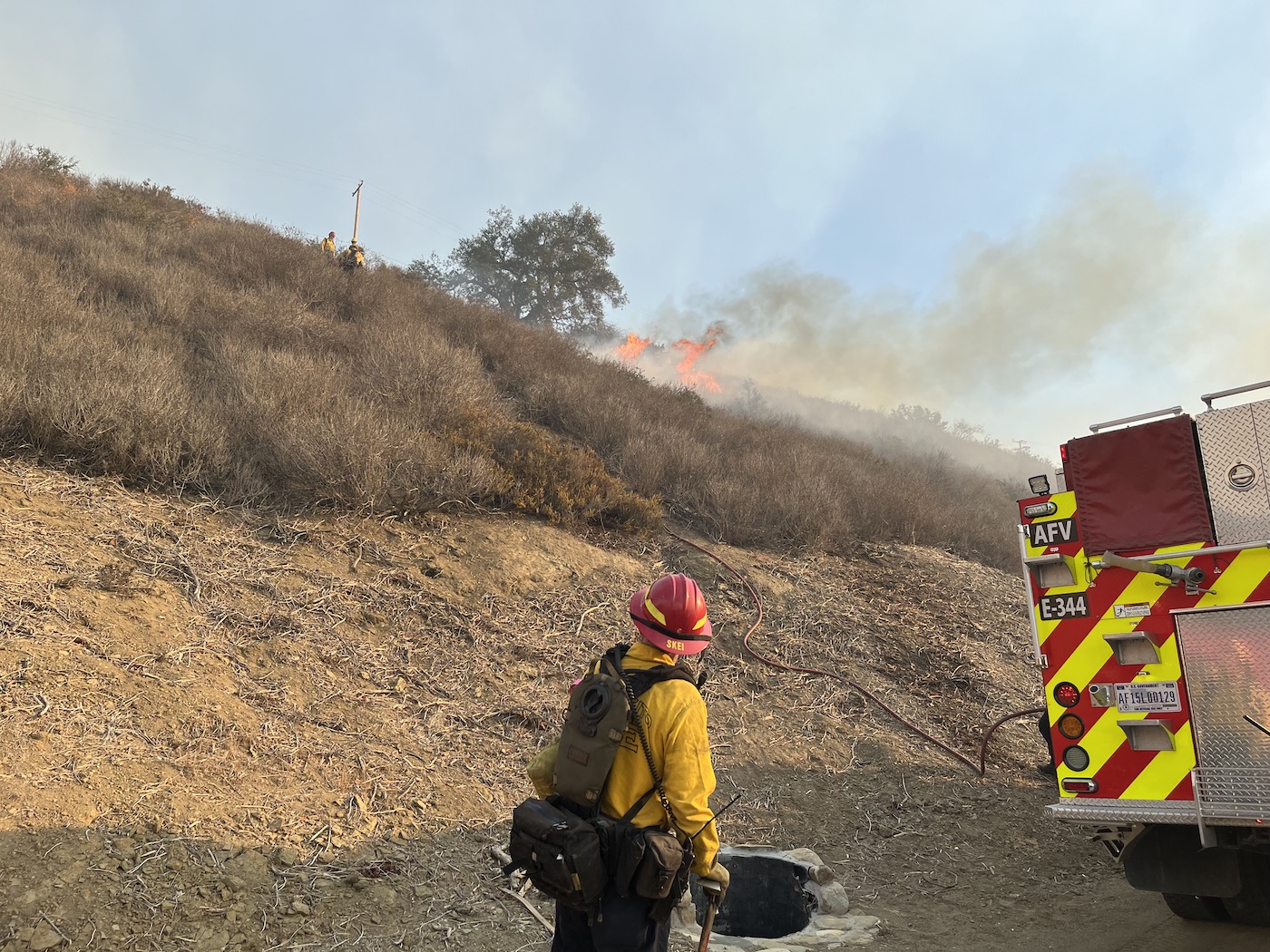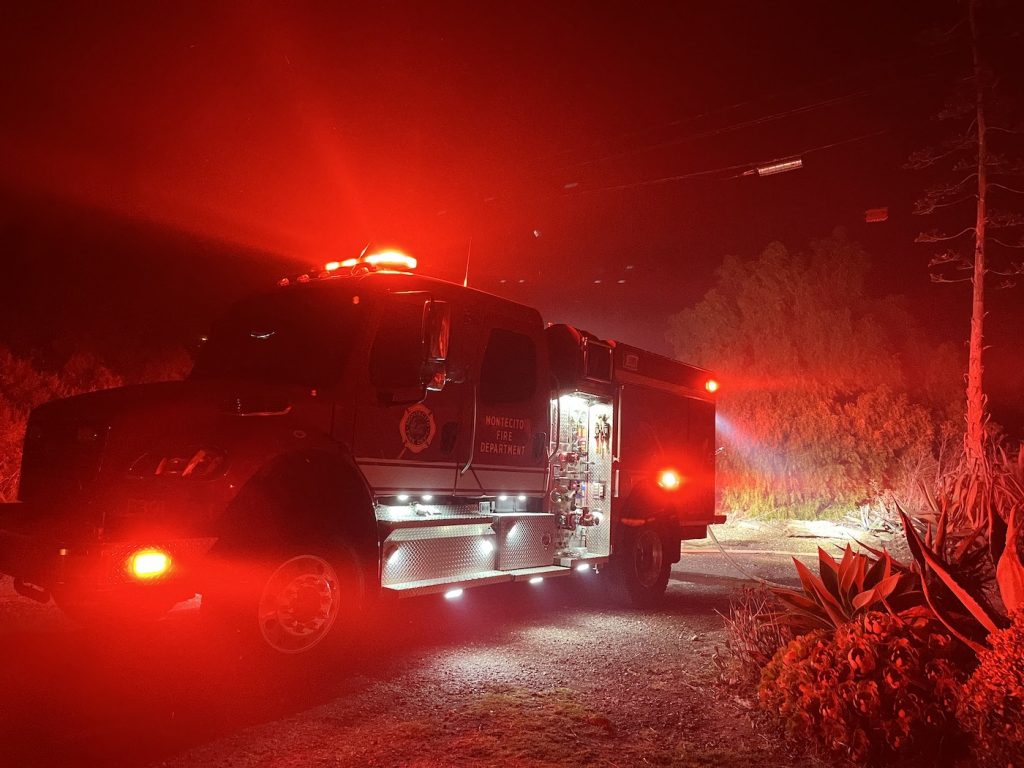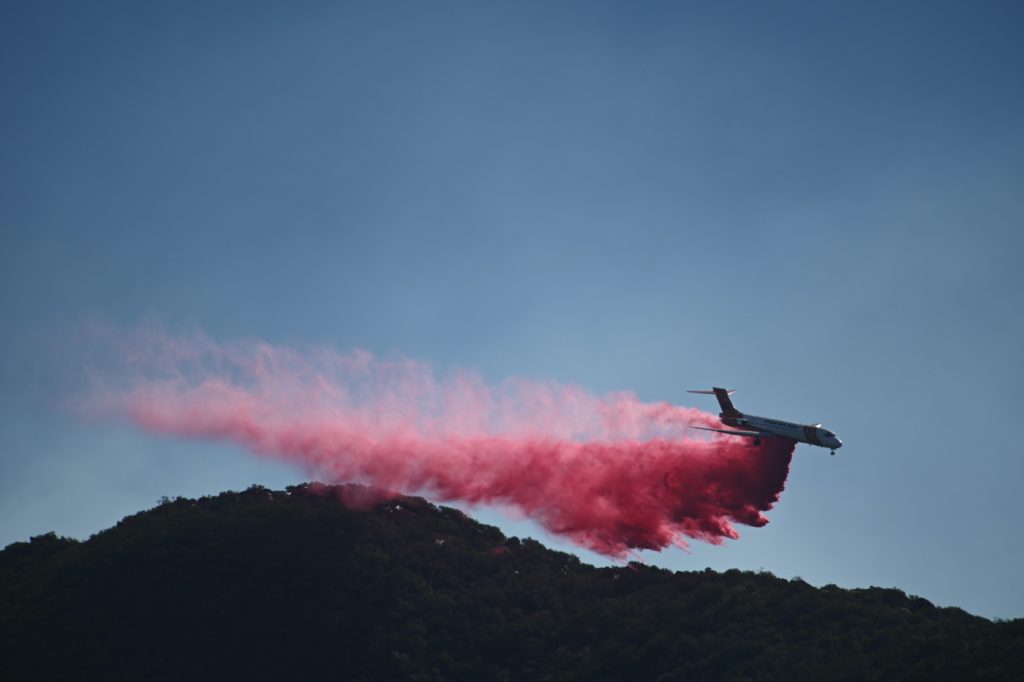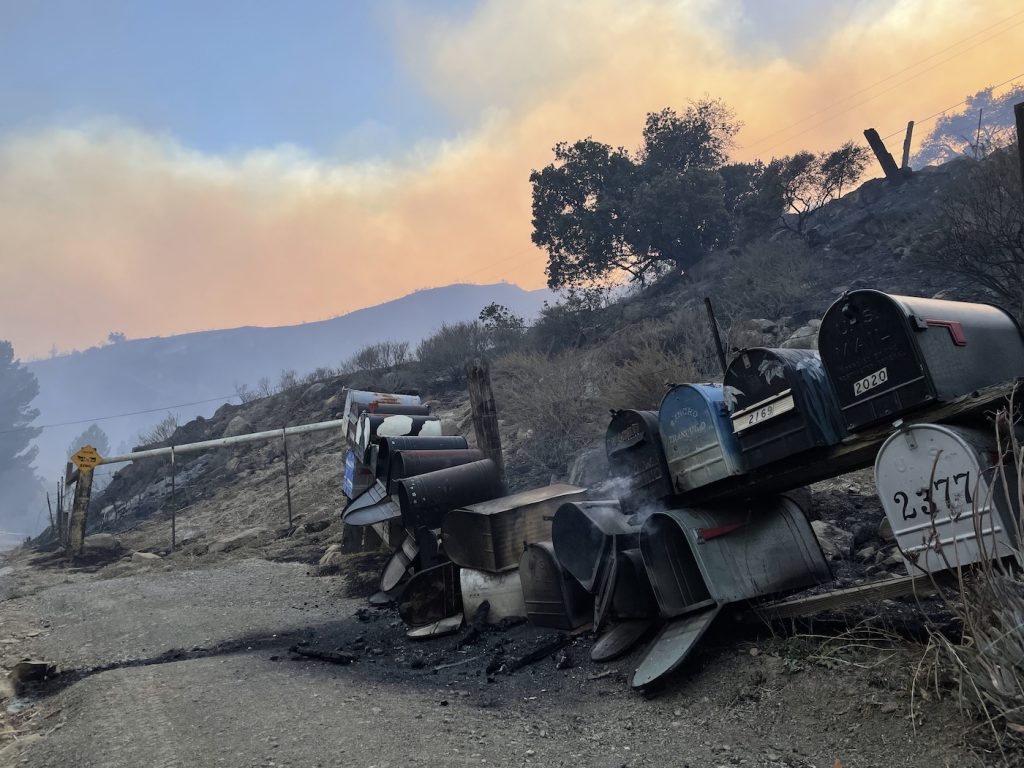Critical Reminder: It’s Sundowner Season on the South Coast

The South Coast experienced its first, and hopefully only, significant wildland fire of the 2021 fire season last week.
The Alisal Fire started above Refugio, along West Camino Cielo, at about 2 pm on October 11. It was propelled by powerful downcanyon winds — what are locally referred to as “sundowners.” Additionally, much of the area where the fire occurred had not burned since the 1955 Refugio Fire, providing a dry, dense fuel bed.
Montecito Fire immediately offered support to our local agency partners by sending two engines and a battalion chief to assist.
When it became clear additional resources would be necessary at the Alisal Fire for multiple days, Montecito Fire committed three engines, two battalion chiefs and six additional personnel to support the incident management team.
All the while, our stations in Montecito remained fully staffed thanks to firefighters who stepped up to fill vacancies while many others were helping at the Alisal Fire.
When the fire’s containment increased substantially last weekend, our engines were released from the incident.
While unfortunate that the Alisal Fire occurred, we are grateful to have had the opportunity to assist our local agency partners.
Also, this wildland fire allowed our firefighters to experience the South Coast’s unique weather patterns and potential for extreme fire behavior, unlike almost anywhere else in the West.
Let’s back up to the night of October 11.
On the first night of the Alisal Fire, Montecito Fire Division Chief David Neels was serving as Operations Section Chief at the incident and reported sustained winds of 45 miles per hour and gusts up to 75 miles per hour.
Firefighting aircraft were unable to fly due to severe turbulence. Any wind over 30 miles per hour grounds most firefighting aircraft.

Within the first 24 hours of the fire, flames burned down to the ocean and spread to the east and west.
Santa Barbara County’s front country is defined by rugged canyons, steep terrain, and coastal influence.
The Gaviota Coastline can be especially treacherous during a wildfire due to the strong, diurnal winds that occur there.
In the spring and fall, Santa Barbara County is prone to a weather condition we have come to know as “sundowners.”
Rich Thompson served as the incident meteorologist at the Alisal Fire and works at the National Weather Service’s Los Angeles/Oxnard office.
“Sundowners are a localized weather pattern in Santa Barbara County. They are similar to Southern California’s Santa Ana winds,” Thompson said.
Thompson explains that sundowners occur when heated air from the Santa Ynez Valley spills over the Santa Ynez ridgetops, causing the air flow to race down the south-oriented canyons of the South Coast. These conditions produce warm, gusty northly winds, typically peaking during the afternoon and early evening, hence the name “sundowner.”
Wind speeds remained extreme throughout the first 48 hours of the Alisal Fire, causing the footprint to rapidly increase from 500 to 8,000 acres in that timeframe.
Another crucial factor in the Alisal Fire’s quick growth: fuels.
Montecito Fire’s Wildland Fire Specialist Nic Elmquist was called in to serve as a division group supervisor managing a section of the Alisal Fire, and, to provide a fire behavior forecast. Elmquist is a qualified and seasoned fire behavior analyst.
“Fire behavior is determined by three things: fuels, weather, and topography,” Elmquist said.

With little rain this past year, Elmquist says the South Coast’s vegetation is bone dry. Local fire officials take periodic measurements of the moisture in chamise, one of the most common species found in our local chaparral ecosystems.
“Peak fuel moisture is usually in March or April. Depending on the rain year, the chamise’s fuel moisture will be around 120%,” Elmquist said. “Where the Alisal Fire started, the fuel moisture readings were at 50%, a level rarely seen. Anything below 60% is considered critically dry.”
Patrick Doyle traveled the South Coast to serve as the fire behavior analyst for the Alisal Fire.
“Critically dry fuels burn with the same ferocity as dead vegetation. That’s what happened here,” Doyle said.
Elmquist and Doyle agree that the autumn sundowner season is particularly dangerous because when fires occur in the fall, the fuels are at their driest period of the year.
“The combination of the complexity of the passes and canyons of the front county, plus the strong sundowners and the critically low fuel moistures, resulted in very extreme fire behavior those first two nights,” Elmquist said.
At the time of filing this article, four homes and two outbuildings were documented as total losses from the fire. They burned during those first two nights of howling winds.
While the Alisal Fire was a considerable distance from Montecito, meteorologist Rich Thompson says those same sundowner winds often travel down the coastline to Montecito.
Once in our front country, the air flow has potential to pick up again, producing gale force winds coupled with warm temperatures and amidst dry vegetation. It’s a recipe for fire danger conditions.
“Foothill communities like Montecito need to be ready,” Thompson said. “The Alisal Fire exploded the first night with the winds blowing. That proves how quickly fire can progress in the foothills when we have high winds and dry fuels.”

Doyle echoed Thompson.
“Fall fires move very fast and you have very little time to get your things and go,” Doyle said.
In addition to having a “go-bag,” Doyle advises everyone to prepare their home before a wildfire occurs.
“Definitely prepare your structure for fire encroachment. With winds like sundowners, ember wash becomes a threat. Look for anything near your home where embers could get established and burn, like in dry grass and leaves. Also, block off openings to the structure to avoid ember intrusion through vents and eaves,” Doyle said.
Montecito Fire offers complimentary Defensible Space Surveys and a Home Hardening Assistance Grant to retrofit vents in your home with ember-resistant materials. Call (805) 969-7762 to speak with a wildland fire specialist about the best options for your home.
With cooler weather and the holiday season approaching, it may feel as though fire season has ended. However, we cannot let our guard down.
The Alisal Fire is a poignant reminder of the South Coast’s secondary sundowner season and the need to prepare for future wildfires. Please visit mon tecitofire.com to access the Ready! Set! Go! wildfire action plan and to share it with your family, friends, and neighbors.







